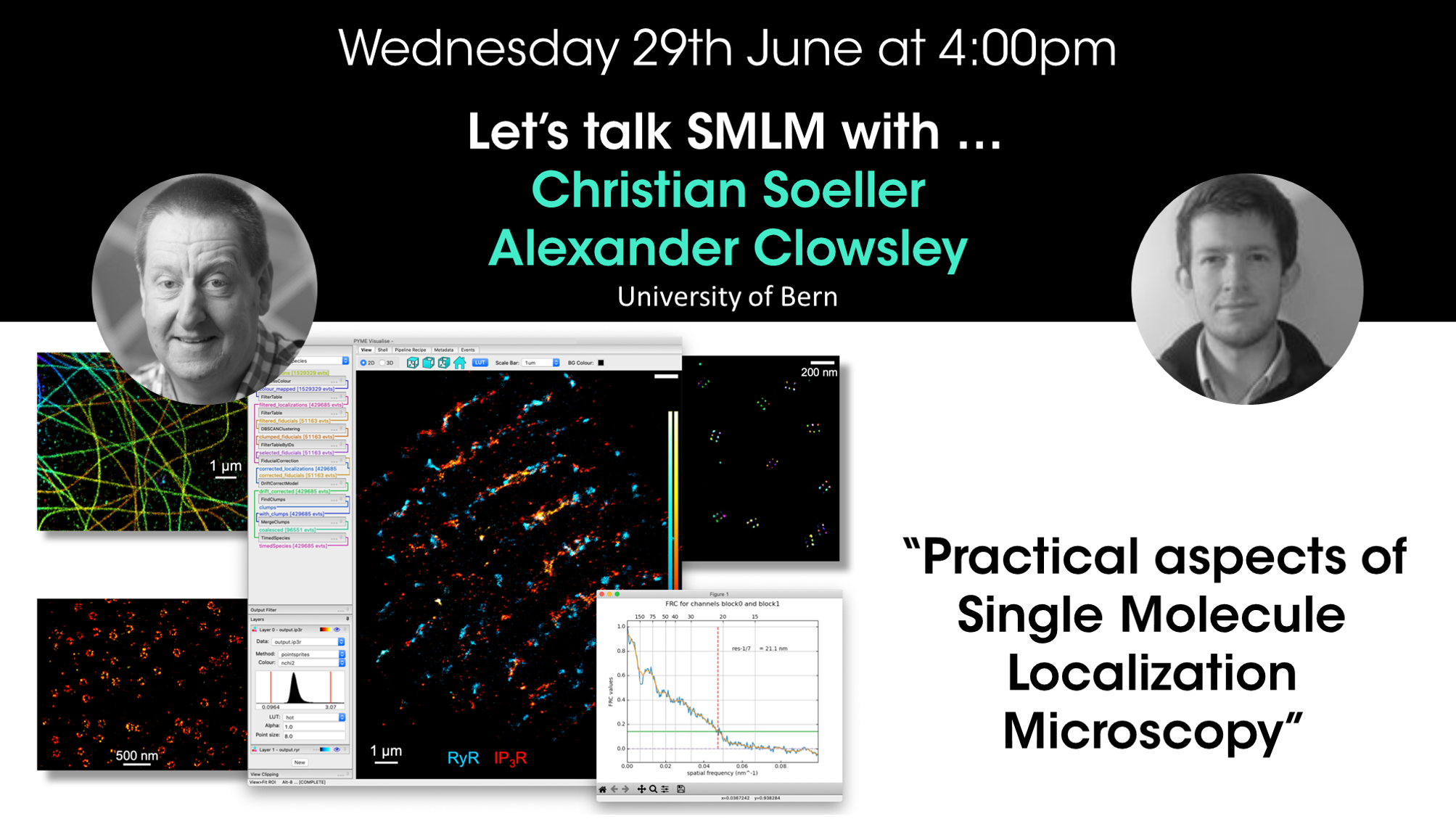
Register for the webinar
About the speaker:
Prof. Christian Soeller attended university in Freiburg and Göttingen before obtaining a PhD at the Max Planck Institute for Fluid Mechanics in Göttingen. He conducted postdoctoral research at the University of London where he developed and applied multi-photon microscopy to study cardiac physiology. He then took up a faculty position in the School of Medicine at the University of Auckland, New Zealand, where he became an early adopter of super-resolution microscopy. In 2012 he moved to the University of Exeter, UK, as a Professor of Physical Cell Biology and continued his research into the use and advancement of super-resolution approaches to enable new biological insight. In 2021 he moved to the University of Bern as co-director of the Institute of Physiology where he now focuses on applying super-resolution imaging of calcium handling proteins and structures to investigate cardiac physiology.
Dr. Alex Clowsley obtained hist Masters and PhD in Biophysics at the University of Exeter. He is now a postdoctoral fellow at the University of Bern
Abstract:
In this webinar we will briefly cover some of the basics of SMLM with dSTORM and DNA-PAINT with a focus on practical aspects to obtain high quality data suitable for biological interpretation. This includes buffer choices for dSTORM and practical aspects of using DNA-PAINT in terms of sequence choices and rarely discussed issues. In our hands we find the use of test and reference samples important for quality assurance and will give some recommendations for robust sample selection and preparation. Software can be both an enabling and limiting factor of SMLM and we will mention our experiences in this area and share the qualities we as users would like to see across platforms. Finally, we will cover practical strategies for multi-colour and multi-channel SMLM as well as recently introduced proximity methods in SMLM to detect protein-protein interactions. Some illustrations from our own biological imaging data will be provided.